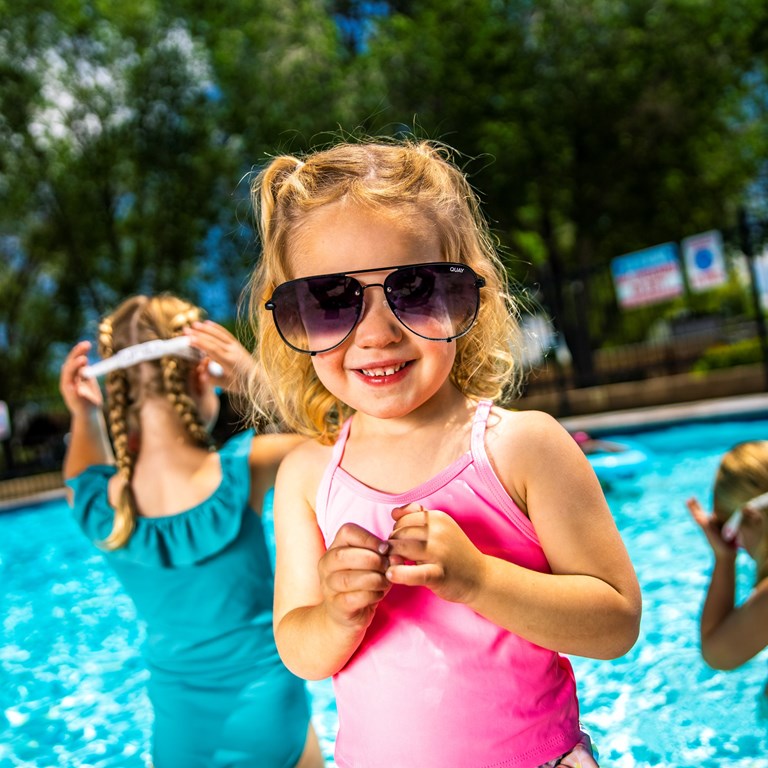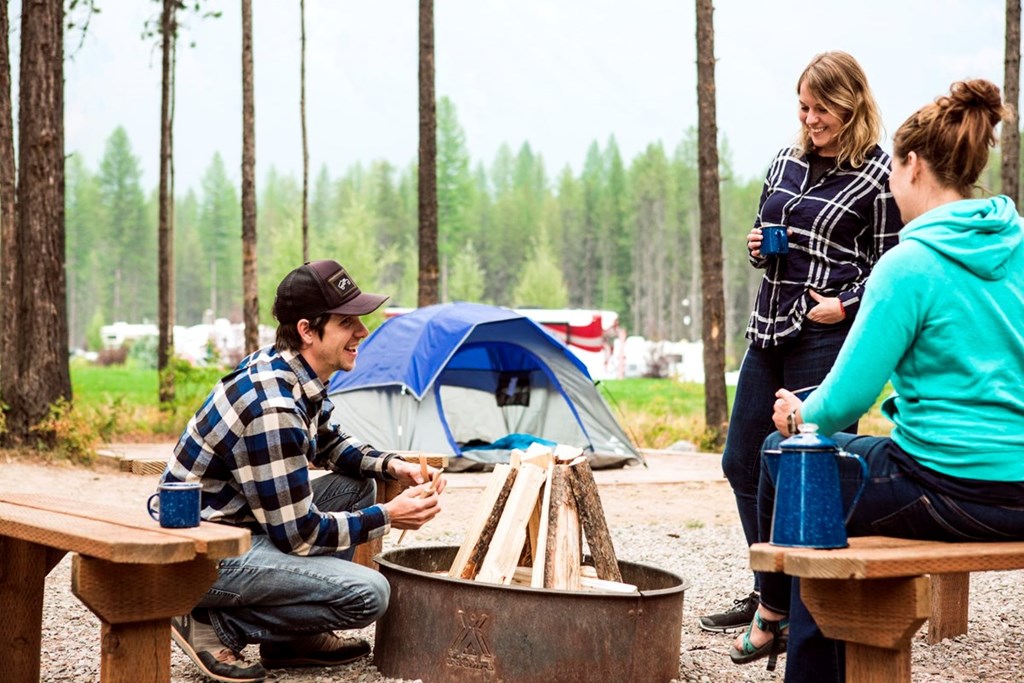Your cart is empty!
Make checkout easy by booking all your reservations at once. Add your sites from different campgrounds into your shopping cart* and then choose checkout.


Setting up a campsite can be an exciting and rewarding experience, whether you're a seasoned outdoor enthusiast or a novice camper looking to connect with nature. But how to set up a campsite efficiently and safely is a skill that every camper should master. In this comprehensive guide, we will walk you through the essential steps to create a comfortable and enjoyable camping experience in the great outdoors.
The excitement of setting up a campsite begins long before you reach the great outdoors. Properly planning and organizing your camping gear at home can make all the difference in ensuring a smooth and enjoyable camping experience.
Before you dive into the process of organizing your camp gear, start by creating a comprehensive camping gear checklist. This list should include everything you'll need for your camping trip, from the essentials like a tent and sleeping bag & first-aid kits, to specific items for cooking, lighting, and outdoor activities. Having a checklist will help you stay organized and ensure that you don't forget any crucial items. If you are planning to bring the kids, make sure to have a camping checklist for them too, to avoid them packing a lot of their stuff. It is also a good idea to keep your children involved and to be oriented in the entire camping planning process.
Once you have your checklist, go through each item on it and inspect your camping gear. Check for any signs of damage, wear, or malfunction. Tents, for example, should be inspected for tears or broken zippers, while camping stoves should be tested to ensure they are in working order. If you discover any issues, address them before your trip to avoid unpleasant surprises at the campsite.
Efficiently organizing your camping gear at home is essential for a stress-free setup at the campsite. Here's how to set up a campsite at home:
Storage Containers: Invest in durable storage containers or bins to keep your gear organized and protected. Label each container to easily identify its contents.
Categorize Items: Group similar items together. For example, keep cooking utensils, pots, and pans in one container, and sleeping gear like sleeping bags and pads in another.
Keep Essentials Accessible: Pack frequently used items, such as your headlamp, multi-tool, or first aid kit, in a readily accessible location.
Setting up a campsite begins with setting up your tent, and doing this at home before your trip is highly recommended. Not only does it familiarize you with your tent's assembly, but it also allows you to check that all the necessary components, like stakes and guy lines, are accounted for. Practice setting up your tent multiple times to ensure you can do it efficiently at the campsite.
When packing your camping gear, follow a systematic approach:
Heaviest Items on the Bottom: Place heavy items like camping stoves and cookware at the bottom of your backpack or car to keep the weight centered and stable.
Frequently Used Items on Top: Pack items you'll need during the day or at rest stops, such as snacks, water, and rain gear, in easily accessible pockets or the top of your pack.
Distribution: Distribute weight evenly to maintain balance, especially if you're hiking to your campsite.
The first step in setting up a campsite is selecting the perfect location. Here's how to set up a campsite in the right spot:
Research: Before you head out, research the area you plan to camp in. Make sure you're aware of any regulations or restrictions related to camping. If available, you can check for campground reviews in Google.
Proximity to Water: Ideally, your campsite should be near a freshwater source for drinking, cooking, and cleaning purposes. Some campgrounds offer tent sites with access to electricity and water. Ensure you follow Leave No Trace principles by camping at least 200 feet away from lakes and streams.
Flat Ground: Look for a flat, level area to pitch your tent. Avoid slopes or depressions where water might collect during rain.
Shade and Sun: Consider your comfort; some shade during the day and a sunny spot to dry out your gear are often ideal.
Now that you've found the perfect spot, it's time to set up your shelter. Here's how to set up a campsite when it comes to your temporary home:
Tent Selection: Choose a suitable tent for your needs and familiarize yourself with its setup instructions before your trip.
Clear the Area: Remove any sharp rocks, sticks, or debris from the ground where you plan to place your tent to avoid damage to your tent floor.
Stake It Down: Secure your tent with stakes to prevent it from blowing away in strong winds.
Rainfly: Always use a rainfly to protect against rain and dew, even on clear nights.
While a well-organized camp kitchen is essential for enjoyable outdoor cooking, you should also consider the physical limited space at a campsite. Moreover, having quality and practical cooking gears are important as well to ensure that you fully utilize your cooking in your designated kitchen. Here's how to set up a campsite kitchen:
Designated Area: Set up your cooking area away from your sleeping quarters to minimize food odors and the risk of attracting wildlife.
Stove and Fuel: Use a camp stove for cooking. Make sure you have enough fuel for your entire trip.
Cooking Utensils: Pack all necessary pots, pans, utensils, and plates.
Food Storage: Store food in airtight containers or bear canisters to prevent unwanted animal encounters.
There is nothing as comforting as having a nice campfire after spending the day out exploring different outdoor activities. However, building a campfire is not as simple as picking up a few firewoods, tossing it all in a pit then lighting it up with a match. Building a campfire requires patience, experience, right supplies, and right knowledge. Moreover, if fires are allowed in your camping area, here's how to set up a campsite with a fire pit:
Check Regulations: Ensure fires are permitted and follow all fire regulations.
Fire Ring: Use an established fire ring or create a safe fire pit away from flammable materials.
Firewood: Gather firewood from the ground, never cut live trees or branches.
Extinguishing: Keep a bucket of water and a shovel nearby to fully extinguish the fire before leaving.
Lastly, remember the Leave No Trace principles when learning how to set up a campsite:
Pack it In, Pack it Out: Take all trash and litter with you.
Respect Wildlife: Observe animals from a distance and don't feed them.
Stay on Established Trails: Avoid trampling on fragile vegetation.
Minimize Campfire Impact: Use established fire rings or follow fire regulations.
These additional campsite tips will help ensure a smooth and enjoyable camping experience while minimizing your impact on the environment and enhancing your safety in the great outdoors.
Plan Ahead: Research the weather forecast for your camping dates and pack accordingly, including rain gear and extra layers.
Lighting: Bring portable lighting options like headlamps, lanterns, and extra batteries for safety and convenience at night.
First Aid Kit: Always have a well-stocked first aid kit on hand and know how to use it for minor injuries.
Insect Protection: Carry insect repellent and consider a mosquito net for a peaceful night's sleep.
Tarp or Ground Cloth: Place a tarp or ground cloth under your tent to protect against moisture and punctures.
Campsite Organization: Keep your campsite organized by designating areas for cooking, sleeping, and relaxation.
Navigation Tools: Bring a map, compass, or GPS device to navigate the area and avoid getting lost.
Emergency Communication: Carry a charged cell phone or satellite communication device for emergencies.
Bear Safety: If camping in bear country, learn about bear safety measures and use bear-proof containers for food storage.
Water Filtration: Invest in a reliable water filtration system to ensure a safe drinking water supply.
Leave No Trace, Always: Practice Leave No Trace principles diligently to preserve the environment for future generations.
Respect Quiet Hours: Be considerate of other campers and adhere to quiet hours to maintain a peaceful atmosphere.
Wildlife Awareness: Educate yourself about the local wildlife and how to safely interact with them from a distance.
Hygiene: Maintain good hygiene by bringing biodegradable soap, hand sanitizer, and a portable toilet or shovel for waste disposal.
Check Gear Before Leaving: Before departing, double-check that you haven't left any gear or trash behind and have properly extinguished fires.
Setting up a campsite is a valuable skill for outdoor enthusiasts. Learning how to set up a campsite involves choosing the right location, setting up your shelter, organizing your camp kitchen, creating a comfortable campfire area (if allowed), and always practicing Leave No Trace principles. With these steps, you can embark on unforgettable outdoor adventures while respecting and preserving the beauty of nature. Happy camping!
Richfield KOA Holiday location is quiet and secluded, allowing you to engage in the activity you love most — relaxing in nature. This KOA is conveniently located near Utah's Trail Country System, National Parks, Forests, and even Museums. While staying at Richfield KOA, you can bring your motor vehicle of choice — ATVs, UTVs, Jeeps or dirt bikes — and be on world-class trails within minutes. Enjoy your stay at one of the Pull-Thru or Back-In RV Sites, complete with full hookups, cable TV and Wi-Fi, or even choose our new sites with deluxe patios, fire pits and patio furniture. This KOA location also offers Camping Cabins and Tent Site with lots of amenities to offer. You can even book your RV Rentals through our partnership with RVshare. You can also inquire about extended stay options to get the most out of your camping experience. Richfield KOA offers some unique features such as E-Bike rentals, pavilion, adult pool, movie nights, and etc. Aside from these amazing features, this KOA is close to local merchants and restaurants as well as RV service and repair.
Ready to plan your next camping trip? Reserve a campsite today for your next family adventure.
That doesn't mean this area has to always be empty. When you start reviewing camping options, your history will display here to help compare sites and find the best stay. You will be able to share your stay information with friends or family and save it for a later time if you have a KOA Account.
Make checkout easy by booking all your reservations at once. Add your sites from different campgrounds into your shopping cart* and then choose checkout.